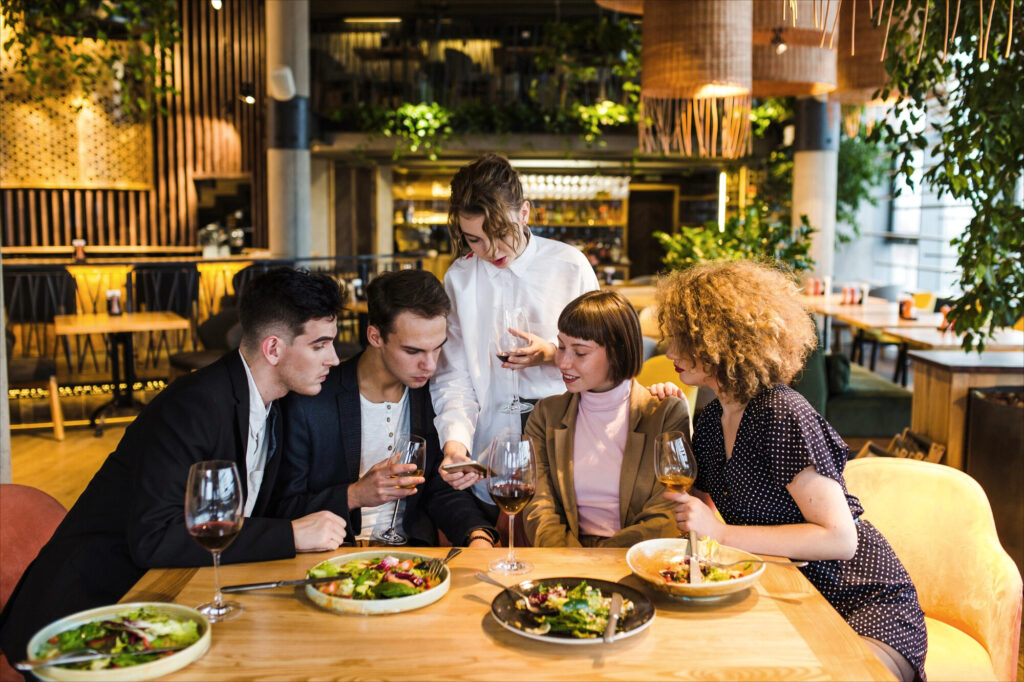
How Can Restaurant Owners Build Long-Term Customer Loyalty
Two years ago, I was haemorrhaging money.
My restaurant had decent food, fair prices, and we were located right downtown. But people would come once, maybe twice, then vanish. I’d see them walking past my windows on their way to other places. It was brutal.
I tried everything the “experts” recommended. Better Yelp photos. Social media contests. Email newsletters nobody opened. Groupon deals that attracted bargain hunters who never came back at full price.
Nothing worked. I was about to give up when my eight-year-old daughter said something that changed everything. She asked why I never took her to the same restaurant twice when we went out to eat. “Because,” I told her, “we like trying new places.”
“But what about Luigi’s?” she said. “We go there all the time.”
She was right. Luigi’s wasn’t the best Italian food in town, but we went there monthly. Why? Because Luigi remembered her name, always had crayons ready, and genuinely seemed happy to see us walk in. That’s when it clicked – restaurant customer loyalty isn’t about the food. It’s about the feeling.

People Don't Want Perfect Service, They Want Real People
I used to train my staff like robots. “Good evening, welcome to…” “Can I start you off with…” “How is everything tasting tonight?” Same script, same smile, every single time.
Customers hated it. I could tell by their faces.
Then I hired Jenny. She was older, had worked at diners her whole life, and completely ignored my scripts. Instead of asking “How’s everything?” she’d say stuff like “You look like you need more coffee” or “Save room for dessert – the chocolate cake is ridiculous today.” Customers started requesting her section.
That’s when I realized my mistake. People can smell fake from a mile away. They don’t want to be “served” – they want to be welcomed.
So I threw out the scripts. Now my staff talks to customers like humans:
- Ask about their day and actually listen to the answer • Share genuine recommendations (“I had the salmon for lunch – it’s killer today”) • Remember little things without making it weird about it • Admit when something’s not great (“The soup’s a little salty today, try the chili instead”)
Last month, a customer told me our place feels like eating at a friend’s house. That’s exactly what I was going for.
Some industry reports say restaurants with “authentic interactions” get more repeat business. No kidding. When did we need a study to tell us people like being treated like people?
Loyalty Programs Are Usually BS (Here's What Works Instead)
Most restaurant loyalty programs are insulting. Buy ten meals, get one free! Congratulations, you just paid $150 to save $15.
I tried that route. Printed cards, stamps, the whole thing. Customers would lose the cards, forget to bring them, or do the math and realize what a crappy deal it was.
Now I do something completely different. I keep notes.
Old Way vs What I Do Now:
Before (Punch Cards) | Now (Just Paying Attention) |
Generic “buy 10 get 1 free” | Remember what people love and surprise them |
Customers lose cards constantly | No cards to lose, it’s all in my head |
Same reward for everyone | Different perks for different people |
Feels like a math problem | Feels like being taken care of |
Only rewards spending | Rewards coming back |
Here’s how it works: Mrs. Johnson comes in every Tuesday for our meatloaf. One Tuesday, I told her we made extra and gave her a to-go container for her husband. It cost me maybe three bucks. She’s been bringing friends ever since.
The college kid who orders the same salad every Friday? I started keeping extra dressing on the side because I noticed he always asked for more. Now he tells people this is “his” place.
It’s not about points or percentages. It’s about noticing what makes people happy and doing more of that.
Consistency Matters More Than Being Amazing
This might sound crazy, but I’d rather be predictably good than occasionally great.
I learned this the painful way. We used to have wild swings in quality depending on who was cooking, what ingredients we had, or how busy we were. One night you’d get the best burger of your life. Next week, it might be dry and overcooked.
Customers stopped trusting us. Can you blame them? Nobody wants to gamble forty bucks on dinner.
So I became obsessive about consistency:
- Every recipe is written down and followed exactly • We prep the same way every single day • New cooks shadow experienced ones for weeks, not days • I taste everything before it goes out (yes, everything) • If something’s off, we remake it, no questions asked
Is our food the most creative in town? Nope. But people know exactly what they’re getting when they come here. My regulars order the same things because they trust those dishes will taste the same every time.
According to OpenTable, most customers care more about consistency than creativity. Makes sense – comfort food should be comforting, not a surprise.
Technology Should Make You Better at Being Human
Every tech company wants to sell restaurants on tablets, apps, and ordering systems that “eliminate human error.” Translation: replace your staff with screens.
That’s backwards thinking.
I use technology, but differently. My point-of-sale system tracks what customers order, but not so I can automate anything. It helps my servers remember that the guy at table six always gets his burger medium-rare, no pickles, extra fries.
Our simple stuff works best:
- Customer notes in our POS (“allergic to shellfish,” “celebrates anniversary here”) • Instagram for showing off our regulars’ favorite dishes (with permission) • Text alerts when customers’ usual tables open up • Simple online ordering that doesn’t require downloading an app
The goal isn’t efficiency – it’s making every interaction feel more personal.
Some research shows restaurants that use customer data to improve service (not push more sales) see way higher customer lifetime value. Of course they do. Nobody likes feeling like a target for upselling.
Technology should make your human staff superhuman, not irrelevant.
Screw-Ups Are Gold Mines (If You Handle Them Right)
Best thing that ever happened to my restaurant? A food poisoning scare that wasn’t even our fault.
A customer got sick after eating here, posted about it online, and blamed us. It turned out she’d eaten at three other places that day, but we got the bad review. I panicked.
Instead of getting defensive or making excuses, I called her directly. Apologized. Asked what happened. Offered to pay her doctor bill. Found out she’d actually gotten sick from lunch elsewhere but dinner at our place made it worse.
Two weeks later, she posted again. This time about how I handled the situation. How I took responsibility even when it wasn’t clearly our fault. How I followed up to make sure she was okay.
That post brought in more customers than any advertisement I’ve ever run.
What I learned about handling problems: • Call, don’t email or text – use your actual voice • Listen first, talk second • Fix what you can immediately • Don’t make customers prove they’re right • Follow up without being asked
Harvard Business Review published something about customers who have problems that get resolved well being more loyal than customers who never have problems. That matches what I see. When you mess up and make it right, people remember how you made them feel.
Conclusion
I’m not running the fanciest restaurant in town. We don’t have a celebrity chef or Instagram-worthy décor. But we’re packed most nights, and half our customers are regulars who bring friends.
The difference between where I am now and where I was two years ago isn’t complicated: I stopped trying to be perfect and started trying to be real.
Restaurant customer loyalty isn’t about rewards programs or marketing tricks. It’s about making people feel like they matter. Like they’re welcomed, not just tolerated. Like coming to your place is the best part of their day.
Tomorrow, learn one customer’s name. Use it when they come in. See what happens. Small changes add up to big differences, but you have to start somewhere.
Your restaurant doesn’t have to be empty. The customers are out there looking for a place that feels like home. Give them one.
Stop treating customers like transactions and start treating them like neighbours. Your bank account will thank you.




